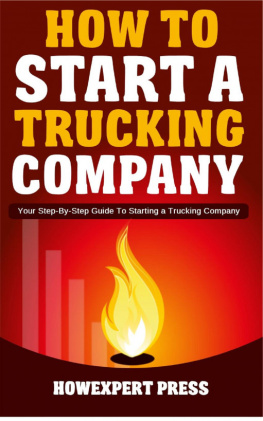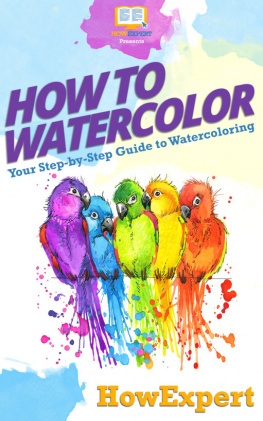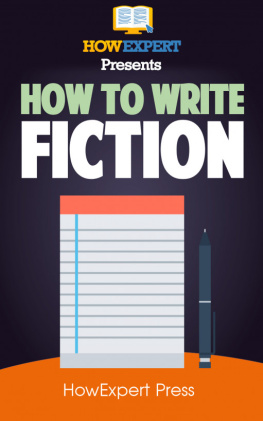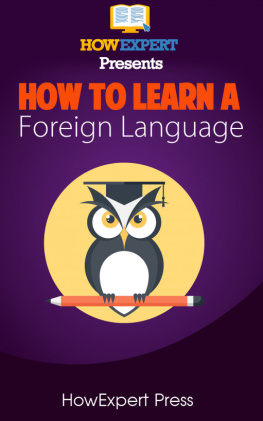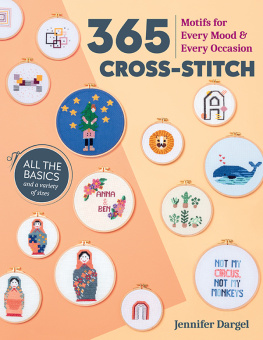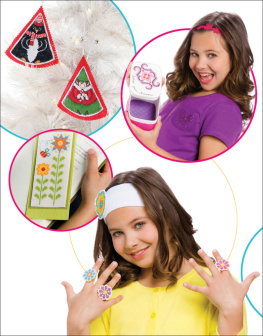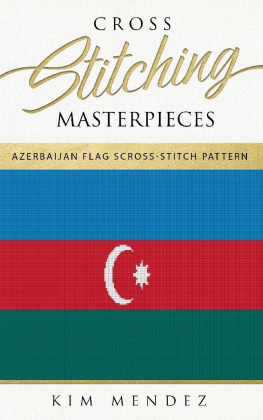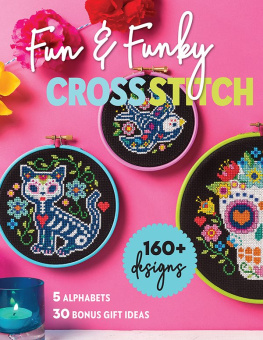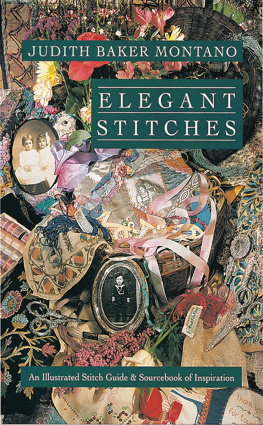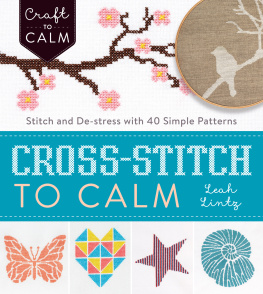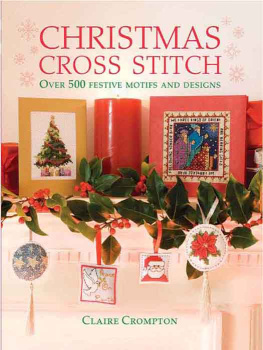How to Cross Stitch
Your Step-By-Step Guide to Cross Stitching
*****
HowExpert Press
Smashwords Edition
*****
Copyright 2011 www.HowExpert.com
Discover Other Titles by HowExpert.com atSmashwords.com:
http://www.smashwords.com/profile/view/howexpert
License Notes
This ebook is licensed for your personalenjoyment only. This ebook may not be re-sold or given away toother people. If you would like to share this book with anotherperson, please purchase an additional copy for each person youshare it with. If you're reading this book and did not purchase it,or it was not purchased for your use only, then you should returnto Smashwords.com and purchase your own copy. Thank you forrespecting the author's work.
* * * * *
TABLE OF CONTENTS
Recommended Resources
Theterm cross stitch refers to a particular type of hand-sewnembroidery.
This method of stitching patterns by usingdifferent colored threads to create artwork can be a verychallenging task. It requires good eyesight (so that you can easilypoke through threads), patience, and the determination to stick tothe long process that is required to finish a project.
When we say challenging, keep in mind all of thethings you have to stay aware of, such as the number of threads foreach color pattern. In addition, the cloth you do cross stitch on(AIDA cloth) has tiny squares which also require accuratecounting.
Cross stitching is a very peaceful hobby forwomen who want to make something in their spare time. Rather thanwasting time watching television, many women prefer to engagethemselves in crafting activities such as cross stitch.
This book will help you to learn cross stitchstep by step, using a simple, easy to do pattern.
The art of making colorful picturepatterns on cloth can be traced back to centuries ago. From thecolorful tapestries in museums and art galleries, you can see thatembroidery has evolved into many forms throughout the ages.
Weaving, on the other hand is somewhat relatedto the craft of cross stitch, but differs in the style and methodbeing used to create it. Cross stitching is popular with differentcultures all over the world. Indigenous tribes in the mountains ofthe Philippines house amazing embroidery made by the natives usingthis method and displaying outstanding craftsmanship.
In the United States, the earliest dated sampleof an embroidered cloth was made by Loara Standish, daughter ofCaptain Myles Standish, back in 1653.
Before then, cross stitching was used todecorate household items like linens, dish cloths and doilies.Personal items such as handkerchief, bags and even hats were alsooften decorated with the colorful stitched patterns.
In China, embroidery has become a part of theirclothing style. Ancient Chinese royalties were very fond of wearingceremonial clothing ornamented with gold embroideries. The custommade clothes were worn with stitched patterns, even for theservants.
Recent generation of embroidering paved the wayfor a digital way of pattern making. Before, people tookinspiration from nature and they stitched the pattern through theirclothes. Today, you can have any kind of custom pattern printedout, complete with guided legends and markings for every color.
People can also cross stitch real photos byhaving them converted and printed into patterns. There are craftingshops that offer photo conversion to patterns, and they can alsosupply all the matching color threads to use for the project.
Cross stitching may appear to be a boring hobbyfor those who dont understand it, but on the contrary, it is veryrewarding in the sense that once you see your project taking shapeit.furthers your interest in completing the pattern. Once thepattern is complete, you can behold a great work of art that allpeople will admire.
This eBook edition focuses on showingyou how to learn and create cross stitch projects in a step by stepmanner. We will show you how to start the project, and how it willprogress as you follow it through.
We will not just teach you the ways to completethis particular project, but also convey the proper procedures andthings to remember in completing a cross stitch project ingeneral.
It is not enough that you can make crossstitches. You have to be aware of the technical side of completinga project as well. As we mentioned earlier in this book, itrequires patience and a keen attention to details.
If you are not focused enough on the project, Idoubt that you can even make a simple figure but if you are excitedto learn to do it yourself without going to costly embroideryclasses, then this guide is a perfect tool to start working thosecrafty hands.
Remember that the key to this task is accuracyand focus, so you have to put your mind into this project and youwill see in the end how much you have rewarded yourself.
Aida Cloth
A type of cloth that comes in many plain colors.This is the most basic cloth for cross stitch and is used only forthat craft. It is constructed with large loopholes that enableeasier maneuvering of needles, and the large gaps allow you tocount the stitches more accurately, which is crucial in determiningyour starting point.
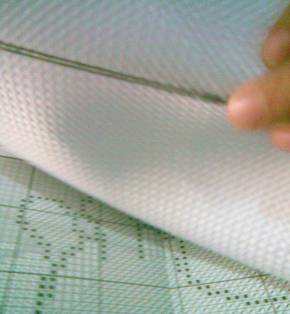
Aida Cloth
The Cross Stitch Needle
Unlike other needles such the ones being usedfor hand sewing, this needle has no sharp point, but instead has arounded tip. The needle hole is a bit bigger than the usual needleto allow easier threading.
Cotton Embroidery Floss
A special type of thread made for cross stitch,made of cotton. This is shiny and has more vibrant color thanordinary thread, which is necessary to emphasize important areas inthe pattern. The best known makers of embroidery floss on themarket are:

Floss Threads
DMC
Anchor
J.P Coats
Kreinik
Weeks Dye Works
The Gentle Art
Crescent Colors
Threadworx
Printed Pattern
This is the printed black and white copy patternthat works as the blueprint of your project. It indicates symbolsand legends that correspond to floss thread color and placementdirection. The size of the pattern also determines how big thefinished product will be, and it has the same number of geometricalsquares as the Aida Cloth.
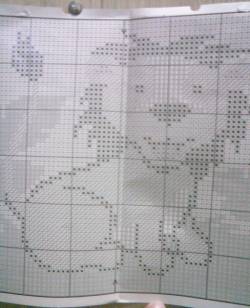
Printed Pattern
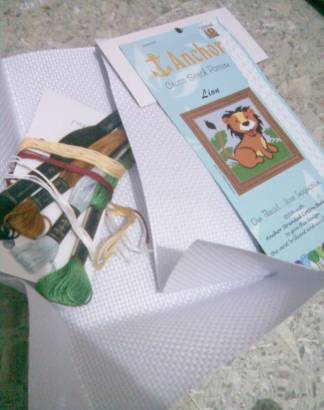
Cross Stitch Kit
Cross Stitch Kit
This is basically a sort of container kit tokeep all your cross stitch materials. It has several compartmentsto separate floss threads and other materials from cluttering theinside of the box, especially the floss. If the floss is not keptproperly, it might tangle and become harder to separate.
Scissors
Obviously you have to have something to cut yourthreads cleanly. Not using a scissor just causes the thread ends tounravel, which makes it harder to push it through the needlehole.
Beads and Charms
Beads are sometimes embroidered together withthe floss thread. Usually professional embroiderers are the oneswho use such materials to embellish a complex design. Most of thetime beads are added to clothing such as formal dresses. In termsof cross stitch projects, beads are needed in order to makeembedded images.



